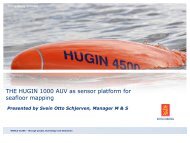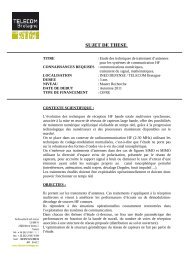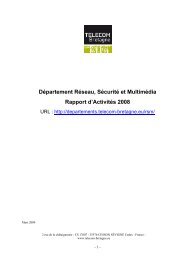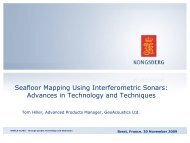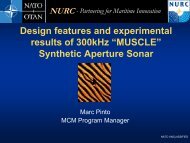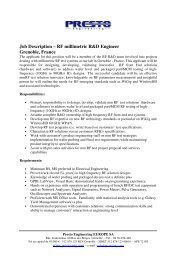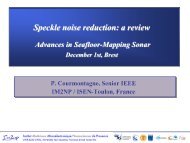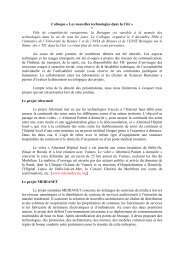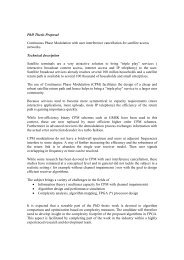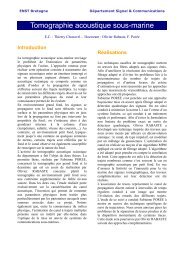Approche a-contrario pour la détection de changements sous ...
Approche a-contrario pour la détection de changements sous ...
Approche a-contrario pour la détection de changements sous ...
Create successful ePaper yourself
Turn your PDF publications into a flip-book with our unique Google optimized e-Paper software.
Modèle d’image<br />
Sommaire<br />
Modélisation a-<strong>contrario</strong><br />
Détection <strong>de</strong> <strong>changements</strong><br />
Conclusion<br />
Contexte <strong>de</strong> l’étu<strong>de</strong><br />
Modélisation du problème<br />
Détection a <strong>contrario</strong><br />
Résultats asymptotiques<br />
Algorithme<br />
Résultats<br />
Supposons que toute image u s’écrit <strong>sous</strong> <strong>la</strong> forme<br />
u = I + b, (7)<br />
où I est constante par morceaux et b une image <strong>de</strong> bruit gaussien.<br />
Le NFA dépend principalement <strong>de</strong>s paramètres suivants :<br />
<strong>la</strong> taille <strong>de</strong> l’image (n = |D BR |),<br />
<strong>la</strong> proportion <strong>de</strong> pixels sans changement dans l’image<br />
(p ∈ [0, 1]),<br />
le niveau <strong>de</strong> contraste <strong>de</strong> l’image (c = σ I<br />
σ b<br />
).<br />
Amandine Robin<br />
<strong>Approche</strong> a-<strong>contrario</strong> <strong>pour</strong> <strong>la</strong> détection <strong>de</strong> <strong>changements</strong> <strong>sous</strong>-pixeliques e



